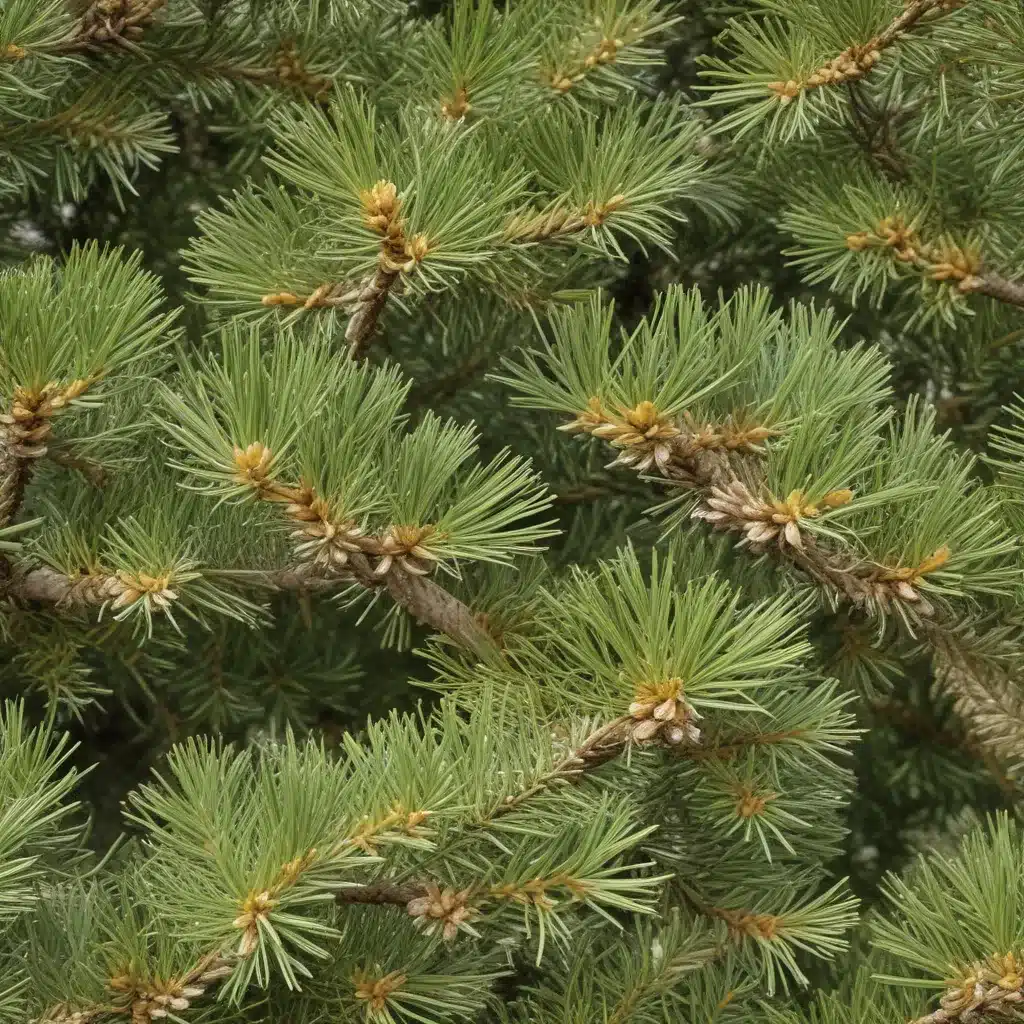
The Virginia Pine (Pinus virginiana), also known as the Scrub Pine or Jersey Pine, is a captivating member of the Pinaceae family, native to the eastern United States. This resilient and adaptable conifer boasts a unique blend of characteristics that make it a valuable asset in both natural ecosystems and landscaping applications.
Botanical Classification
Taxonomically, the Virginia Pine belongs to the genus Pinus, which encompasses over 100 species of pines found across the Northern Hemisphere. Within the genus, the Virginia Pine is classified under the subgenus Diploxylon, a group of hard pines known for their sturdy, resinous wood. Its specific epithet, virginiana, refers to its native range in the Commonwealth of Virginia.
Phylogenetically, the Virginia Pine is closely related to other Eastern American pines, such as the Shortleaf Pine (Pinus echinata) and the Pitch Pine (Pinus rigida), sharing a common ancestor that diverged during the Tertiary period. This evolutionary relationship has endowed the Virginia Pine with adaptations that allow it to thrive in the diverse environments of the Eastern United States.
Habitat and Distribution
The Virginia Pine is a native species of the eastern United States, with its natural range extending from southern New Jersey and Long Island, New York, southward to central Georgia and westward to eastern Texas and southeastern Missouri. Within this expansive region, the Virginia Pine is particularly abundant in the Piedmont and Coastal Plain physiographic provinces, where it often colonizes disturbed or degraded sites.
Adapted to a wide range of soil types, the Virginia Pine flourishes in well-drained, sandy or rocky substrates, often found on dry, south-facing slopes and ridges. Its tolerance for poor, nutrient-depleted soils and its ability to withstand drought conditions make it a resilient pioneer species, capable of establishing itself in areas that have been cleared or impacted by human activities.
Morphological Features
The Virginia Pine is a medium-sized, evergreen tree, typically reaching heights of 30 to 60 feet (9 to 18 meters) and diameters of 12 to 24 inches (30 to 60 centimeters) at maturity. Its trunk is often straight and cylindrical, with a slightly flattened or irregular crown. The bark of the Virginia Pine is thin, scaly, and gray-brown in color, becoming more deeply furrowed and platy with age.
The foliage of the Virginia Pine consists of pairs of needle-like leaves, or fascicles, that measure 1.5 to 3 inches (4 to 8 centimeters) in length. These needles are a distinctive bluish-green or gray-green hue, with a slightly twisted or curved appearance. The tree’s reproductive structures include small, oval-shaped cones that are 1.5 to 3 inches (4 to 8 centimeters) long, with scales that are armed with small, sharp prickles.
Ecological Significance
In its native range, the Virginia Pine plays a crucial role in various ecosystems, serving as a vital component of pine-oak forests and woodlands. Its hardy nature and adaptability allow it to colonize disturbed areas, contributing to the stabilization and regeneration of degraded landscapes.
The Virginia Pine provides essential habitat and food resources for a diverse array of wildlife species. Its dense foliage offers shelter and nesting sites for numerous birds, including the Pine Warbler, Brown-headed Nuthatch, and Carolina Chickadee. The tree’s seeds are a valuable food source for small mammals, such as squirrels and chipmunks, as well as various bird species.
Conservation efforts focused on the Virginia Pine often involve maintaining and restoring its natural habitats, particularly in areas where it has been threatened by urban development, land-use changes, or the encroachment of more shade-tolerant species. The Virginia Pine’s ability to thrive in degraded environments also makes it a valuable tool in ecological restoration projects aimed at rehabilitating disturbed or abandoned lands.
Valuable Properties
The Virginia Pine is prized for its versatile and valuable properties, both as a timber resource and as an ornamental species in landscaping. Its wood is characterized by a pale, yellowish-white to reddish-brown heartwood and a distinct, slightly resinous aroma.
As a timber species, the Virginia Pine is widely used in construction, particularly for framing, sheathing, and general utility lumber. Its wood also finds applications in the production of pulp and paper, as well as in the manufacture of various wood products, such as crates, pallets, and low-grade furniture.
In the realm of landscaping and horticulture, the Virginia Pine is often utilized as an ornamental tree, valued for its dense, pyramidal form and its ability to adapt to a wide range of soil and climate conditions. Its adaptability and drought tolerance make it a popular choice for use in xeriscaping, erosion control, and windbreak plantings. The Virginia Pine’s distinctive foliage and cones also contribute to its appeal as a decorative element in gardens, parks, and other outdoor settings.
Cultural and Historical Associations
The Virginia Pine has a long and storied history of use by Native American populations within its native range. The Powhatan, Monacan, and other tribes recognized the versatility of the Virginia Pine, utilizing its wood for constructing shelters, tools, and even canoes. The tree’s inner bark and resin were also used for medicinal purposes, such as treating respiratory ailments and skin infections.
During the colonial era, the Virginia Pine played a significant role in the development of the American timber industry. Its abundance and ease of access made it a valuable resource for the construction of ships, homes, and other essential structures. The tree’s resinous sap was also an important source of naval stores, including pitch and turpentine, which were essential for maintaining and repairing wooden vessels.
Today, the Virginia Pine remains an important part of the cultural and ecological landscape of the Eastern United States, serving as a symbol of the region’s natural heritage and contributing to the diverse tapestry of its forests and landscapes. TriCounty Tree Care is dedicated to the preservation and responsible management of this remarkable tree species, ensuring its continued presence in the region for generations to come.


